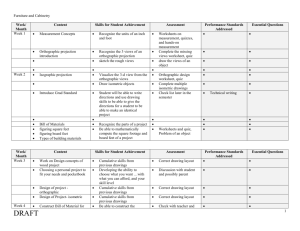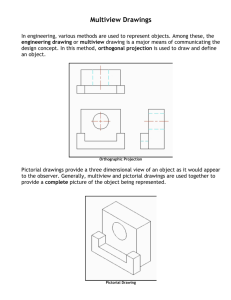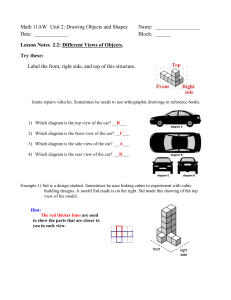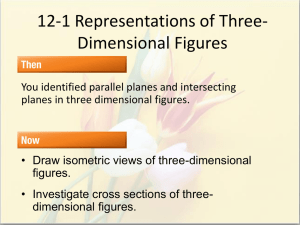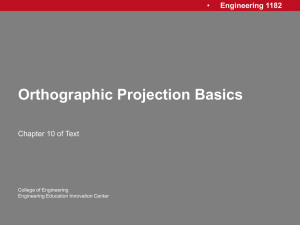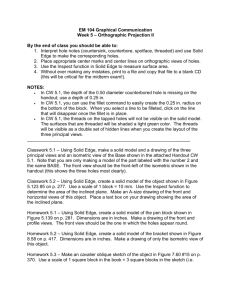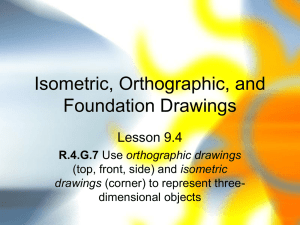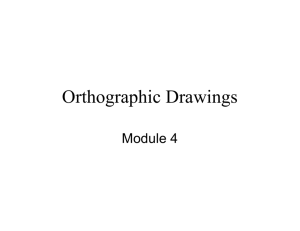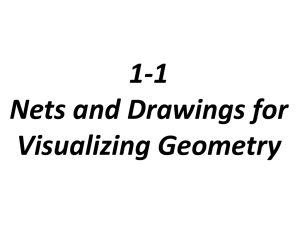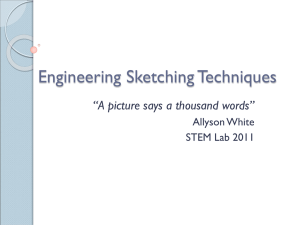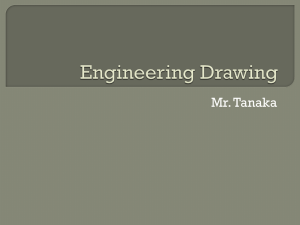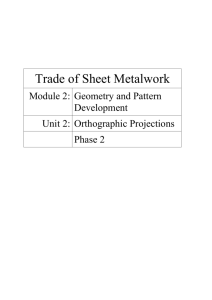Activity/Project Potential Best Practice
advertisement
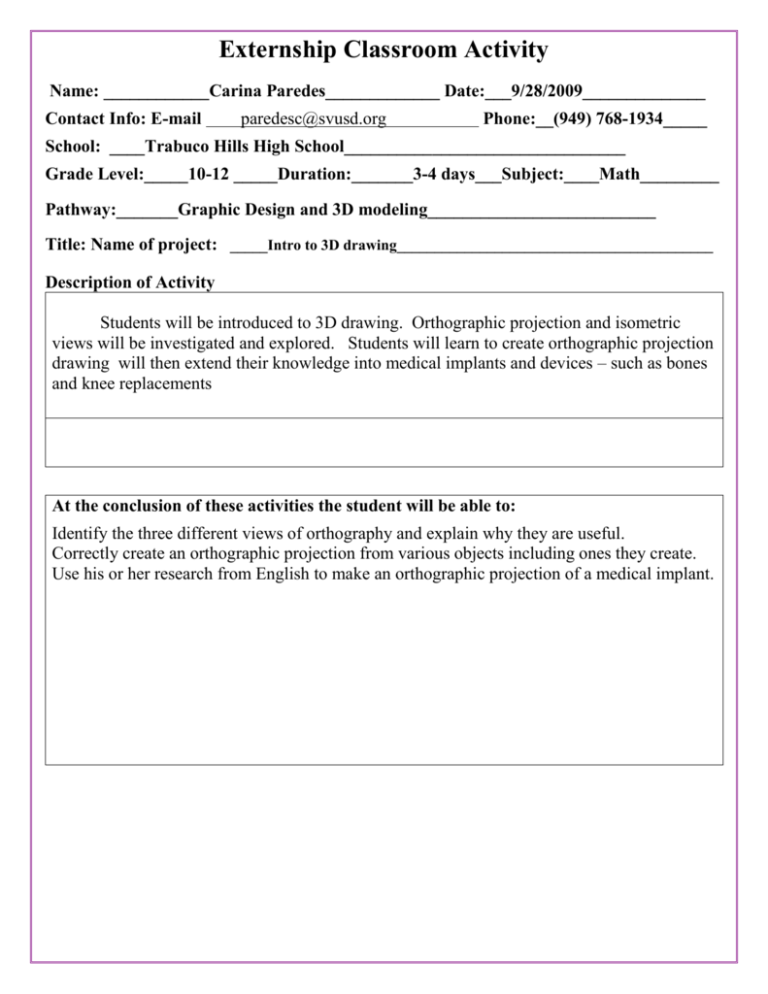
Externship Classroom Activity Name: ____________Carina Paredes_____________ Date:___9/28/2009______________ Contact Info: E-mail paredesc@svusd.org Phone:__(949) 768-1934_____ School: ____Trabuco Hills High School________________________________ Grade Level:_____10-12 _____Duration:_______3-4 days___Subject:____Math_________ Pathway:_______Graphic Design and 3D modeling__________________________ Title: Name of project: _____Intro to 3D drawing__________________________________________ Description of Activity Students will be introduced to 3D drawing. Orthographic projection and isometric views will be investigated and explored. Students will learn to create orthographic projection drawing will then extend their knowledge into medical implants and devices – such as bones and knee replacements At the conclusion of these activities the student will be able to: Identify the three different views of orthography and explain why they are useful. Correctly create an orthographic projection from various objects including ones they create. Use his or her research from English to make an orthographic projection of a medical implant. ROCP/ High School or Community College course title Course Med-Sci Math (Geometry/Algebra 2) Projected Learning Outcomes for externship: Students will learn that abstract mathematical concepts have real life medical applications. Apply sketching and projection rules to create 2D sketches that describe 3D objects. Final Learning Outcomes (project completion): Students will have several 3D sketches including a medial implant/device. Directions: What are the step-by-step directions that another educator would follow to duplicate this activity: Day 1 Introduce 3D drawing – orthographic projection and isometric drawing. Explain the basic rules of orthographic sketching- the three views of the object. Show how an object can be turned to represent different views. Compare an actual model with sketches. Demonstrate a model of real object (built with legos or stapler) and have the students copy it on grid paper. Distribute worksheet that has students draw orthographic projections for simple objects. (Many can be found on internet or other sources). As a class, work on the first couple together. Then allow students to practice in small groups. Students will complete worksheet and compare within their group and consult with other groups. Towards the end of the period distribute matching worksheet. In their groups students will look at proper three-view orthographic projections and match with the 3D view. They will understand the correct way to sketch the views. Then improve their original drawings for homework. Day 2 Allow students to work in their original small groups to go over the first worksheet. Distribute worksheet that contains top view drawings. Students will need legos or connecting cubes to build objects. The teacher will model the first problem as an example. Students will draw front and side orthographic views from the 3D models. The second part of the activity, the students will complete an isometric drawing of each and investigate the relationship between volume and surface area of each figure. Day 3 Students will complete the activity and compare and confirm with the other groups and instructor. Once again in groups, students will complete four more orthographic projections. The last object they will draw based on a medical implant (such as hip bone, knee joint) they researched in English. They can borrow the body parts from an anatomy class. The students will continue to work on this object for the rest of the period along with preparing for a presentation with their English research. Day 4 Students will present and critique the last orthographic projection of the medical object to the class along with their research in English. Academic and Career & Technical Education Standards addressed in this exercise: CTE Standard: Engineering Design C4.0 Students use proper projection techniques to develop orthographic drawings C4.2 Understand the orthographic projection process for developing multi-view drawings. Geometry Standard 8.0 Students know, derive, and solve problems involving perimeter, circumference, area, volume, lateral area, and surface area of common geometric figures. 22.0 Students know the effect of rigid motions on figures in the coordinate plane and space, including rotations, translations, and reflections. Supplies/Set-up/Handouts: What is necessary for someone else to duplicate what you did? (Include examples of all handouts, worksheets and transparencies) Grid paper Worksheet found on the internet, textbooks, or other resources Research from English Simple objects such as books, books, stapler Legos or connecting cubes Ruler Medical objects – bones, instruments Evaluation Strategies Check drawing for proper view and drawing procedures Grade worksheets and return with comments Presentation and student critiques on the last orthographic projection QuickTime™ and a decompressor are needed to see this picture. QuickTime™ and a decompressor are needed to see this picture. QuickTime™ and a decompressor are needed to see this picture. QuickTime™ and a decompressor are needed to see this picture.
